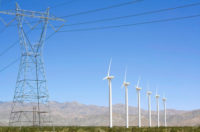Congress should implement greater oversight of the U.S. Energy Dept.'s carbon capture storage program and seek better accountability, the U.S. Government Accountability Office said in a Dec. 20 report. That assessment comes after several failed attempts to demonstrate funded carbon capture and storage technologies with the potential to mitigate global climate change.
DOE spent about $1.1 billion since 2009 to demonstrate 11 large-scale projects at coal-fired power plants and industrial facilities meant to accelerate the commercial deployment of carbon capture and storage (CCS). The demonstrations ended with just three of 11 projects being built, GAO said.
Of eight projects at the power plant sites, one was completed and began operating, but it was shut down in 2020. “Implementing them has proven to be a challenge,” GAO said in its analysis for the U.S. Senate Energy and Natural Resources Committee and the House Science, Space and Technology Committee.
Two of the three industrial demonstration projects were completed and continue to operate.
Three coal projects withdrew from participating in DOE’s Clean Coal Power Initiative, and the agency terminated its cooperative agreements with four others. “In total, DOE invested nearly $684 million in six of the eight coal projects the agency initially selected for funding,” GAO said.
In reviewing documents and conducting interviews, GAO found that economics was a problem for many coal-based CCS projects, even though some had completed engineering and design studies. They were affected by competition with natural gas, uncertainty surrounding carbon markets and tax incentives, and high development costs.
DOE’s decision to fully commit to coal projects at their initial selection rather than subjecting them to further review increased the risk of failure, GAO said. Department officials also negotiated funding agreements on an accelerated schedule, which increased the risk of underwriting projects that were unlikely to succeed, according to the oversight agency.
“DOE bypassed cost controls at the direction of its senior leadership on four struggling coal projects in order to provide additional time to meet key milestones, ultimately spending nearly $472 million before terminating those cooperative agreements prior to the construction of any facilities,” GAO said.
Department officials told GAO that under normal circumstances, it can take up to a year to conduct due diligence and negotiate terms in a cooperative agreement, but the agency accelerated Clean Coal Power projects in less than three months.
DOE also bypassed cost controls designed to limit its financial exposure for the four coal demonstrations whose cooperative agreements were ultimately terminated. “Consequently, DOE exceeded its planned early-phase funding targets on projects for which no facilities were constructed,” GAO said.
When selecting industrial CCS projects, DOE used a more traditional “down-selection” process to allocate to 13 projects the initial funding for additional design research before narrowing its selection to three projects for full funding.
The extra time for projects to refine designs, scopes and plans allowed DOE to select projects that were in the best position to succeed, department officials told GAO. “Specifically, they noted that at the time of initial application, most coal demonstration projects had not conducted in-depth design and engineering work, meaning that DOE assumed a great deal of risk in selecting them for full funding,” the GAO report said.
Little Likelihood of Success
Ultimately GAO found that improving program-level practices alone might not fully address “the risk of senior DOE leadership placing taxpayer funds at risk if future CCS demonstration projects struggle to meet key performance milestones.” The oversight agency said a congressional mechanism is needed to provide greater oversight and accountability of DOE project expenditures on CCS demonstrations.
“Absent such a mechanism, DOE is at risk of expending significant funds on CCS demonstration projects that have little likelihood of success,” GAO said.
DOE said in response that its new Office of Clean Energy Demonstrations will evaluate GAO’s recommendations and develop corrective actions needed to address GAO’s concerns.
The new office, announced Dec. 21, is funded with $21 billion from the newly enacted federal infrastructure law to manage CCS and other clean energy technology demonstration projects, including green hydrogen, grid-scale energy storage, small modular nuclear reactors and others. The funding is part of $62 billion DOE will gain from the law for the clean energy demonstration projects, it said.
Nearly $9.5 billion of that program will fund four regional green hydrogen hubs, a manufacturing and recycling program, and technology demonstration and commercialization. About $3.5 billion is earmarked for CCS pilot and demonstration projects, with $2.5 billion for advanced nuclear reactor projects.
DOE said it plans to locate demonstration projects in areas that are economically hard hit and at highest risk for pollution and climate change impacts, as part of the Biden administration Justice40 initiative's goal to deliver 40% of clean energy investment benefits to those communities.
“DOE will now have to scale up its current capabilities for selecting and administering such projects,” said the American Institute of Physics.
Frank Rusco, GAO’s natural resources and environment group director who conducted the investigation, said GAO has not yet evaluated the new office.
“As usual, DOE is considering our recommendations and if they implement them it should help avoid future problems,” he told ENR.






